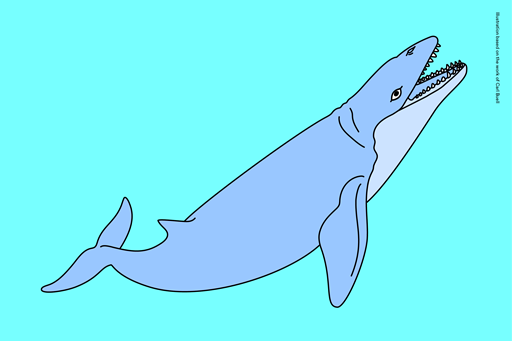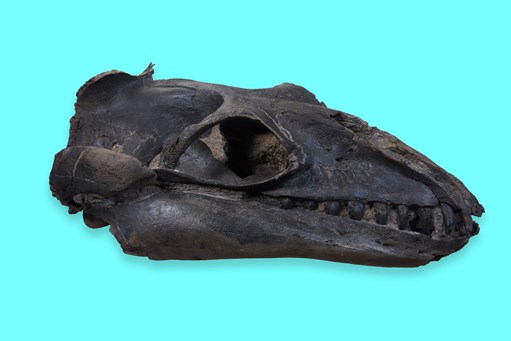5. Janjucetus hunderi
Fierce whale ancestor of modern giants
Janjucetus was a small whale that lived around 25 million years ago off the Victorian coast. It hunted large fish for food, gripping them between its sharp teeth with the help of powerful jaw muscles.
Despite having fearsome teeth, the skull bones of Janjucetus show that it was in fact a very primitive baleen whale – but without baleen. Janjucetus is therefore a vivid evolutionary link between ancient whales and modern giants like the Blue Whale. A few fossils of relatives have been found elsewhere in the southern hemisphere, but Janjucetus has only been found in Victoria.
About the animal
|
Scientific name |
Janjucetus hunderi |
|
How do you say its name? |
Jan-juh-SEE-tuss HUN-der-eye |
|
How big? |
Three metres long |
|
When did it live? |
25 million years ago |
|
What did it eat? |
Fish |
Fossil facts
|
Significant Victorian location |
Jan Juc, Surf Coast |
|
Traditional Owners |
|
|
Who found it? |
Local teenager Staumn Hunder, who spotted the fossils on the shore. |
|
Who described and named it? |
Senior Curator Vertebrate Palaeontology, Museums Victoria, Dr Erich Fitzgerald |
|
What is special about it? |
Janjucetus was a predatory ancestor to the giant filter-feeding whales of today. |
|
Significance of the fossil |
Janjucetus is unique to Victoria. |
|
Full name and meaning |
Named after the place it was found, Jan Juc, and the person who found the fossil, Staumn Hunder. |








